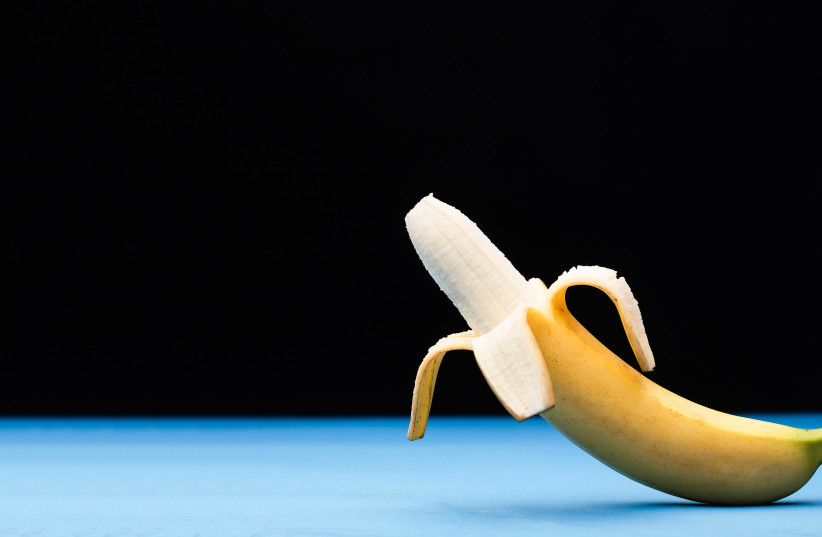Man claims not masturbating, having sex improves health - is he right?
No Nut November has raised the question of whether this abstinence has health benefits. A Reddit user claims it changed his life for the better — but research may not back him up.
You might not have heard of the "No Nut November" challenge, whose participants abstain from sex, masturbation and orgasms during the entire month of November.
However, one participant sparked a new discussion as to whether complete abstinence has any health benefits and if it is worth continuing No Nut November into December.
Since there is a Reddit group (or subreddit) for almost anything (even one dedicated to sticking bread onto trees), IFLScience decided to look at one such group, r/NoFap, which acts as a sort of support group for people who, for one reason or another, have chosen to stop masturbating and/or have sex.
Regardless of No Fap November, people in the subreddit take extended breaks from masturbating and report to their friends how it feels.
One of these subreddit members' "success stories" was published last month and received a surprising amount of attention online.
"Today marks day 90. I had no idea that I was 3 months in because I didn't check my streak often, maybe once every 1-2 weeks which I think was key in my abstinence," wrote Reddit user u/Vyxize.
He claimed that abstaining from masturbating has a number of health benefits, though he admitted that it could just be due to the placebo effect.
"During these 90 days, I have experienced more energy, my brain stopped sexualizing normal things and my brain fog is basically gone. I find it easier to socialize, and start conversations. I have also experienced a huge energy boost in the gym, and have seen tremendous progress during these 3 months," he wrote.
"I personally will not go back to masturbating, as I believe not doing it has helped me more than doing it has. Some people may call this placebo, and even if it was just placebo, all these success stories have actually helped with other people's mental health."
Does science support No Nut November?! A Urologist explains semen retention
Is there really any benefit in avoiding masturbating and sex?
People on r/NoFap tend to cite health benefits such as more energy and increased levels of testosterone. But is any of this true?
Well, any evidence for this is weak, and there is other evidence that contradicts it.
One claim is that if we stop masturbating, it will boost testosterone levels.
However, as Australia's Healthy Male notes, this is based on a small and not very reliable study, which claimed that men's testosterone levels increased after not masturbating or having sex for seven days.
However, another study discovered that masturbation actually increases testosterone levels, and another study saw that there isn't really any difference either way.
Others claim that avoiding sex and masturbation results in higher levels of energy.
Despite this, a study on what effect masturbation and sex will have the night before an athletic test saw that there wasn't any statistically significant difference in the physical performance between those who masturbated, had sex or abstained.
In fact, there are a number of studies that show tangible benefits to masturbating.
According to one study, achieving orgasm 21 or more times a month can reduce one's risk of developing prostate cancer by nearly a third.
Another study found that sex and masturbation can boost serotonin levels, which is a good way for those with insomnia to fall asleep.
The study concluded that engaging in safe and satisfying sexual activity, whether alone or with a partner, alongside other sleep routine strategies can offer the general public a healthy approach to improving sleep quality.
Abstaining from masturbating may be cited by some Reddit users (some of whom confess to being sex addicts) as being beneficial. However, any benefits for the general public are either not clear or unsupported by medical research.
The side effects of not masturbating
People participating in No Nut November should think twice after a doctor in the UK's NHS revealed some of the potential side effects on TikTok.
Dr. Karan Rajan explained that one very distinct side effect of No Nut November is wet dreams.
"These nocturnal emissions are not always about sexual arousal," Rajan said.
"It's a chance for your body to clear out old sperm. You see, your sperm have an expiration date, so if you haven't fired your gooey cannon in a while, it's a chance for your body to clear out the old stuff while you sleep so the sperm on tap is fresh."
"It's a chance for your body to clear out old sperm. You see, your sperm have an expiration date, so if you haven't fired your gooey cannon in a while, it's a chance for your body to clear out the old stuff while you sleep so the sperm on tap is fresh."
Dr. Karan Rajan
Rajan added that "You are basically a sperm recycling factory. Any sperm that reach their sell-by date or go unused get broken down and reabsorbed by the body. This is especially important for men that have had vasectomies, their tubes cut, because they still produce sperm. Unfun fact, if your body didn't reabsorb sperm, your dingleberries would swell up like a dongfish's horngus."
Is Masturbation Bad For You? Doctor FACT-CHECKS Masturbation Myths
🐪🗻🐪🗻🐪🗻🐪🗻🐪🗻🐪🗻🐪🗻🐪🗻🐪
🐪🗻 This has been an Escape From Egypt moment on the Coconut Whisperer blog in honor of the former Escape from Egypt channel on the Disqus channel network 2018-2019 with 34K followers and was the absolute weirdest, wackiest and strangest news channel ever on Disqus !🐪🗻
The easiest way to open a Coconut is to whisper it a joke & it will crack up with laughter
https://disqus.com/home/forum/the-coconut-whisperer/














